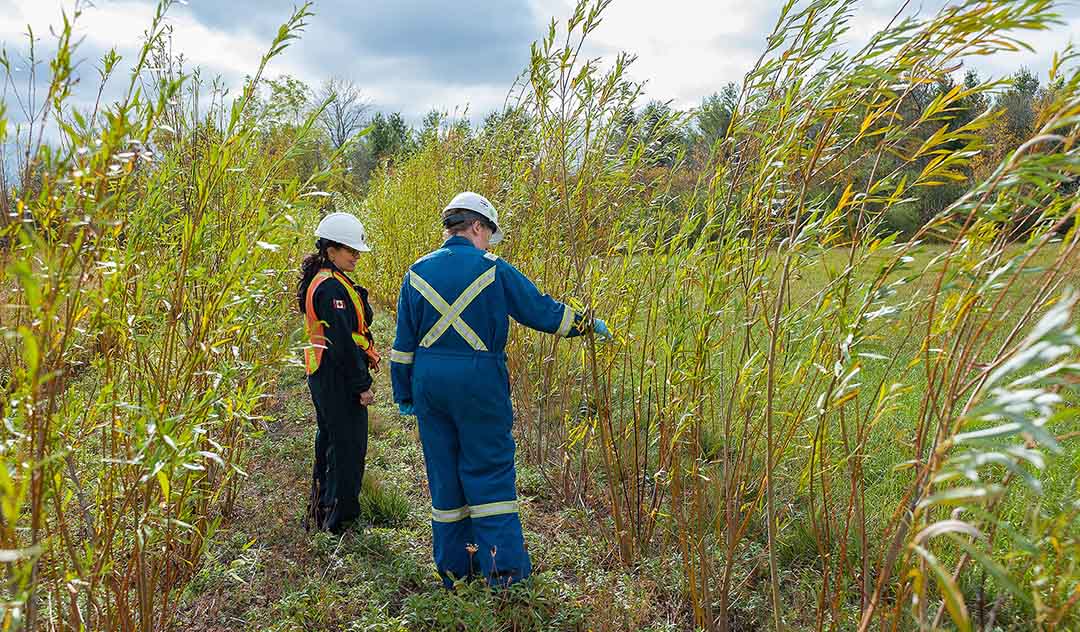Phytoremediation: What is it, and why might it be right for your contaminated site?
February 04, 2020
February 04, 2020
Put your plants to work as an inexpensive, sustainable tool to help you achieve site closure
Plants can achieve marvelous things. Botanists, gardeners, and landscape professionals know what I’m talking about. Now, I’ve found a fantastic way to incorporate plants into my work remediating contaminated sites. It’s called phytoremediation.
If you’re looking to remediate a brownfield site, phytoremediation is a possible solution. This technique is more sustainable and inexpensive than a traditional “dig and dump” method. Could this work for your project? Read on to learn more.
Phytoremediation is the use of vegetation to contain, sequester, remove, or degrade contaminants in soil, sediments, surface water, and groundwater. Essentially, plants clean up the contamination. In the province of Ontario, Canada, I’ve noticed the increased use of this innovative technology during the past 10 years.

At Suncor’s Oakville Terminal, our team addressed contaminated soil by using grasses and contaminated water with willow trees.
Phytoremediation works well when dealing with petroleum hydrocarbon contamination, which is a contamination that can be addressed by biological processes. In this case, the contamination is distributed in the soil and groundwater.
This type of contamination can be found on oil and gas sites, including refineries, terminals, and old gas stations. Most brownfield sites are also affected by petroleum hydrocarbons, but this type of contamination can also be found in agricultural lands, along roads, or near old industrial sites
When remediating a site with petroleum hydrocarbon contamination, the traditional method involves digging up the contaminated soil and trucking it offsite for disposal at a waste facility. This conventional route is expensive and labor intensive.
Since phytoremediation is a more sustainable remediation strategy—especially when compared to dig and dump, chemical oxidation, or other more invasive techniques—you’ll find the public reacts more favorably to this approach.

Here’s an example where my team and I, working with Suncor Energy, implemented phytoremediation. Suncor’s Oakville Terminal is in the suburbs of Oakville, in southern Ontario. It was formerly an oil refinery, with land farming activities conducted as part of the regular operations.
Land farming involved applying waste oil sludge to soil and cultivating the soil to stimulate bacterial degradation of hydrocarbons in the sludge. The land farms operated under an environmental compliance approval (ECA) for a waste disposal site.
After land farming activities ended, Ontario’s Ministry of the Environment, Conservation and Parks required Suncor to remediate the land farm areas as part of the ECA closure. Using the traditional dig and dump method, all the soil would have to be dug up and trucked offsite for disposal, with costs as high as $11 million (CAD).
But Suncor turned to my team and we considered another option: phytoremediation.
Since phytoremediation is a more sustainable remediation strategy, you’ll find the public reacts more favorably to this approach.
Phytoremediation had not been previously approved as a remediation method for closure of an ECA in Ontario—so we had to get the regulators on board. We presented phytoremediation as a scientifically defensible solution and successfully negotiated with regulators to approve a phytoremediation program.
Our team designed and implemented a multiphase system. We addressed contaminated soil by using grasses. Think of wild grass, not a pretty, cultivated lawn. We planted seeds of tall fescue, annual ryegrass, and perennial ryegrass. These grasses are very tolerant. They’re able to grow and deal with many kinds of stress—including hot, cold, and some contamination.
We know, however, that the contamination levels at some sites are so high that grass seeds won’t germinate. Through Stantec’s sponsored research with the University of Waterloo, we used bacteria—plant-growth-promoting rhizobacteria (PGPR)—to treat the seeds. PGPR blocks a chemical cycle inside the seeds that allows them to ignore stress that would otherwise prevent them from germinating. These phenomenal seeds, treated with bacteria, provided us with a very high germination rate. So, because we had ground cover, our vegetation released chemicals into the soil that broke down the contamination. The vegetation also helped the bacteria present in the soil to do the same thing.
We addressed the contaminated groundwater by using willow trees, which acted as a solar-powered pump-and-treat system, treating the groundwater extracted by the roots and providing a hydraulic control barrier for the site. These slim trees, which we referred to as whips, needed to be planted up to one-meter deep, so they could reach and treat the contaminated water.
The refinery is still an active storage terminal, but the phytoremediation process allowed Suncor to continue production as scheduled. Now, petroleum hydrocarbon concentrations in the soil have been reduced by 40% to 95%, and groundwater concentrations have been reduced by 70% to 90%. In 2018, we were awarded the Suncor President’s Operational Excellence Award for the success of the phytoremediation program.

Once your successful phytoremediation system is in place, you must monitor it to ensure the program is working.
Once your successful phytoremediation system is in place, you must monitor it to ensure the program is working. There are two different types of monitoring—chemical and performance. You measure the contamination in both soil and groundwater over a certain period. You also measure growth for the trees and the ground cover vegetation, because that’s a good indication of the health of the ecosystem you’re trying to establish.
I’m very proud of our work with Suncor on the Oakville Terminal, and I’m excited by the future possibilities for phytoremediation. Phytoremediation can be a successful tool to help you achieve site closure, both as a long-term remedial technology and as a risk-management technique. Could it be the right tool for you? Contact me if you’d like to plant the seed for your upcoming remediation program.